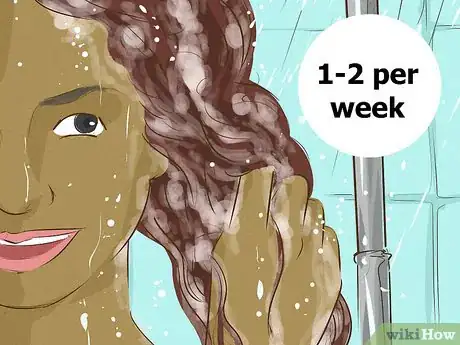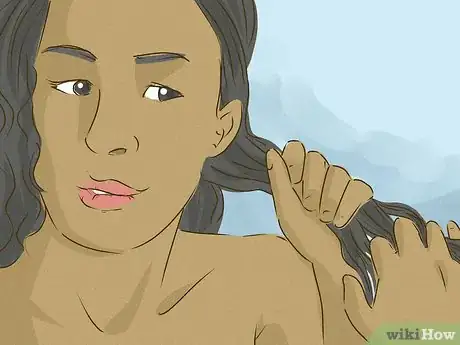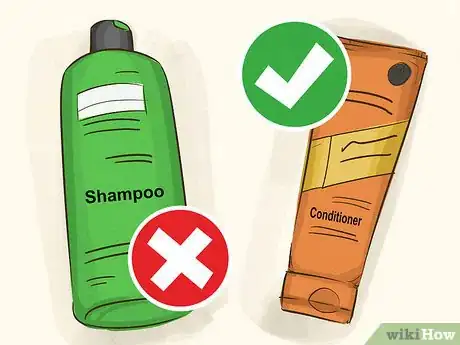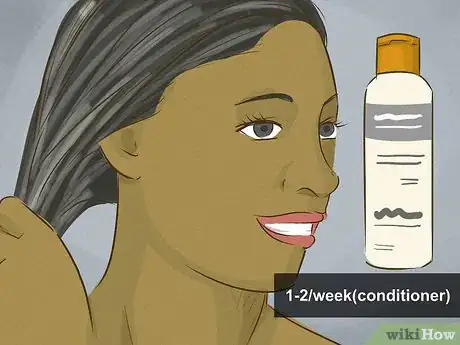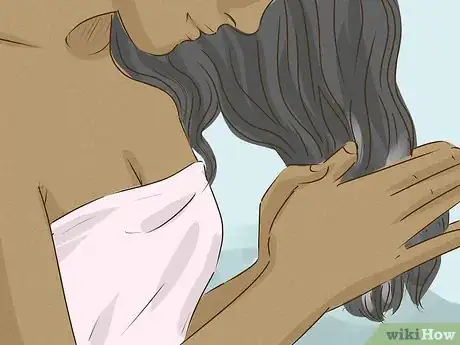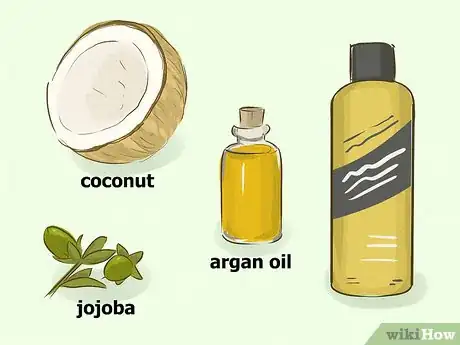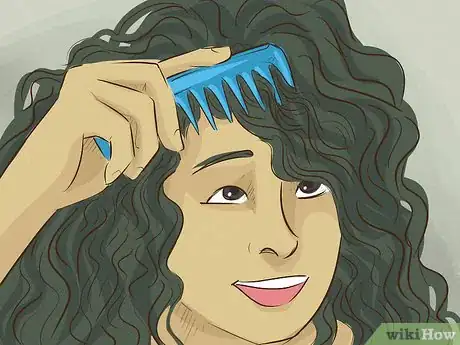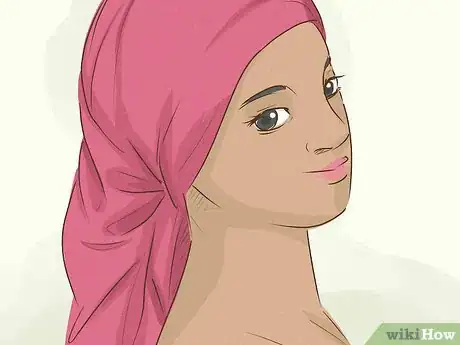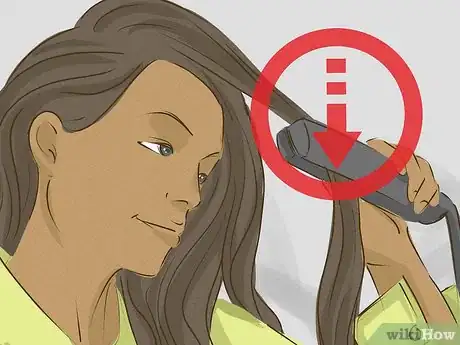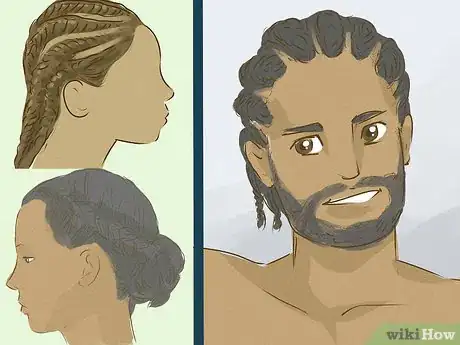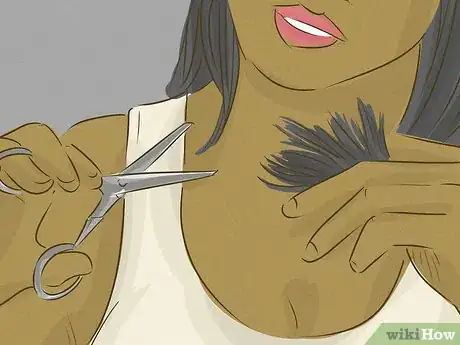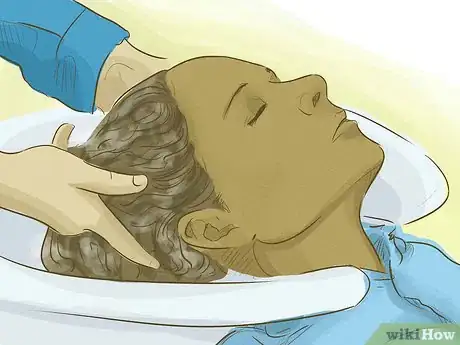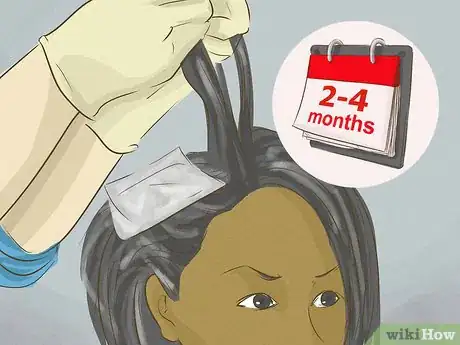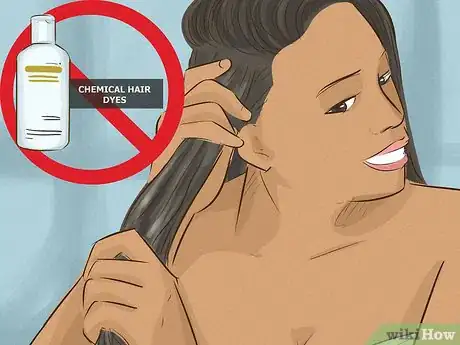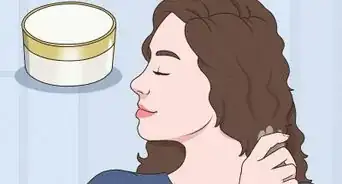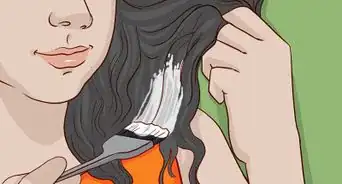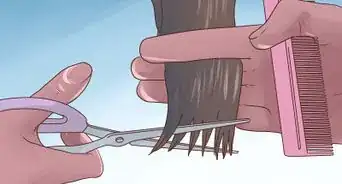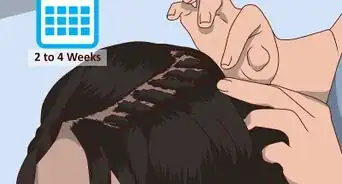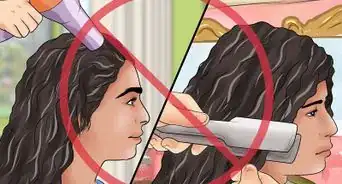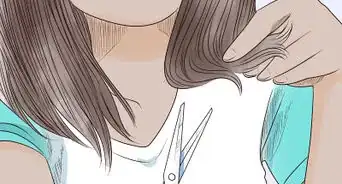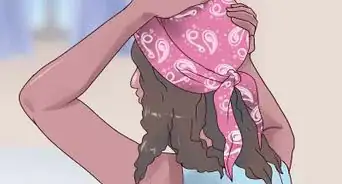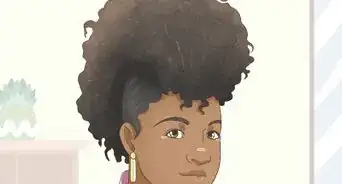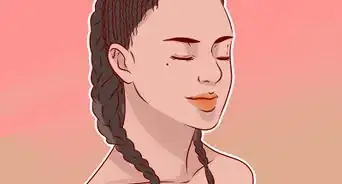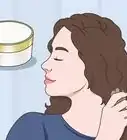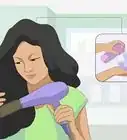This article was co-authored by Ndeye Anta Niang. Ndeye Anta Niang is a Hair Stylist, Master Braider, and Founder of AntaBraids, a traveling braiding service based in New York City. Ndeye has over 20 years of experience in African hair including braiding box braids, Senegalese twists, crochet braids, faux dread locs, goddess locs, kinky twists, and lakhass braids. Ndeye was the first female of her tribe in Africa to move to America and is now sharing her knowledge of African braids passed on from generation to generation.
There are 10 references cited in this article, which can be found at the bottom of the page.
wikiHow marks an article as reader-approved once it receives enough positive feedback. This article received 35 testimonials and 83% of readers who voted found it helpful, earning it our reader-approved status.
This article has been viewed 1,595,843 times.
To take care of African hair, the most important element is moisture. You want to keep your hair hydrated and conditioned as much as possible. To do this, apply leave-in conditioner and natural oils to your hair every day. You can also wash your hair with conditioner instead of shampoo. For best results, wash and deep condition your hair once a week, apply a protein treatment once a month, and relax your hair after 8-16 weeks. With some maintenance and patience, you can easily take care of your relaxed hair!
Steps
Washing Your Hair
-
1Wash your hair 1-2 times a week to prevent excessive dryness. African hair should not be washed every day. To preserve your natural oils and prevent breakage caused from dryness, wash your hair about 1 time a week.[1]
- If your hair is greasy or your scalp is itchy, you can wash your hair more than once a week. This is just a guideline.
-
2Detangle your hair with your fingers when you are in the shower. Instead of using a brush or a comb, get major tangles out of your hair with your fingers. As your hair is wet, comb through it with your fingers and separate the strands with any knots or tangles. Start from the ends of your hair and work your way up the strands. Detangle your hair before you apply shampoo or conditioner.[2]
- If your hair is very knotted, apply your shampoo or conditioner first. This lubricates your hair and makes it easier to untangle. In addition, you can use a wide-tooth comb to help untangle it. Only use this if you have to.
Advertisement -
3Try washing your hair with conditioner instead of using shampoo. Shampoos are often too harsh for African hair. To wash your hair yet still provide moisture, use conditioner instead! Apply a generous amount to your hair after you completely wet it, and work the conditioner through your hair with your fingers. In addition, rub the roots of your hair with the conditioner to cleanse your scalp. Finally, rinse your hair thoroughly after 1-3 minutes.[3]
- If you don’t want to use conditioner as your shampoo, ensure you use sulfate-free shampoo. Sulfates in shampoo often strip your hair of natural oils, which help prevent breakage.
-
4Use a deep conditioning treatment 1-2 times a week. Apply a generous amount from root to tip after you wash your hair. Let the conditioner sit on your hair for 15-45 minutes. For best results, wrap your hair in a plastic shower cap. Rinse the conditioner out completely after it sits on your hair for a while.[4]
- Applying a deep conditioner prevents hair breakage by infusing your hair with intense conditioning ingredients.
- Your hair can be damp or dry when using deep conditioner.
- For a deeper treatment, sit under a hair dryer after you put on the shower cap. The heat will help the conditioner penetrate your hair deeper.
- Look for deep conditioners for chemically treated or relaxed hair with ingredients like coconut oil, argan oil, aloe vera juice, and honey.[5]
-
5Apply leave-in conditioner and natural oils to your hair while it is damp. After you get out of the shower, use a generous amount of leave-in conditioner and apply it to all of your hair from root to tip. Then, squeeze a quarter-sized amount of a natural oil into your hands, rub your palms together, and run it through all of your hair. Your hair will soak up the leave-in conditioner quickly, so don’t be afraid to cover the strands![6]
- Your hair needs moisture to keep its elasticity and resist damages, especially after you relax it.
- For best results, use a water-based leave-in conditioner. Look for ingredients including aloe vera and glycerine as well.
Protecting Your Hair
-
1Use natural products instead of alcohol or synthetic ingredients. Hair products with harsh ingredients will strip your hair of any natural oils and cause excessive dryness. To prevent this, always use natural ingredients, like coconut, jojoba, or argan oils. These are best for African hair.[7]
- Shop for products at beauty or health food stores.
- You can also use products specifically made for African hair.
- Avoid products with petroleum or petrolatum.
-
2Be gentle with your hair at all times to avoid damages and breakage. Your hair follicles are fragile after you relax them, so you always want to handle your hair with care. When you apply product, wash your hair, or brush your hair, treat it as if each strand is made of gold. Brush your hair gently, and run your fingers through your hair slowly rather than aggressively.[8]
- For example, when combing your hair, you can remove the brush from your hair at the ends, rather than combing all the way through.
- In addition, you can use wide-tooth combs or brushes rather than brushes with firm, hard bristles.
-
3Wrap your hair in a silk scarf to keep it protected while you sleep. Wrap your hair around your head following its natural shape, and then place a silk scarf across the top of your head. Gather the ends of the scarf at the back of your head, and secure the scarf with 2 knots to keep it in place. Then, twist the ends of the ponytail several times so it does not come undone. Pull the end of the scarf across your forehead, and tuck it underneath the scarf near your eyebrow.[9]
- Silk scarves provide a soft buffer between your hair and your pillowcase. This prevents breakage caused by moving your head in your sleep.
- This also saves you time in the morning! If you wrap your hair, it will stay straight and tangle-free as you sleep.
-
4Use heating styling tools sparingly. Frequent use of flat irons and curling irons eventually leads to hair dryness and damages. Use them as minimally as you can, and always use the lowest heat setting if you do decide to use them.[10]
- Using styling tools occasionally is okay, just make sure to use a heat-protectant serum or spray first.
-
5Create protective hairstyles to avoid breakage. There are countless options for protective hair styles! To find a protective hairstyle, search online and pick out some style ideas. For a simple solution, pull your hair back into a sleek ponytail, and secure a hair tie around your hair at the base of your neck. After 1 or 2 weeks, you can find a stylist to give you all over braids, rope twists, or cornrows.[11]
- These styles keep your relaxed hair protected from damages while giving you a stylish, elegant look.
- You can create a board on Pinterest, for example.
Maintaining Hair Health
-
1Trim your ends every 4-6 weeks to keep your hair healthy. After you relax your hair, your ends will be extremely dry. You can easily snip them off yourself or get a trim at a salon. Routinely trimming your ends keeps your hair healthy, removes split ends, and revitalizes the follicle. For best results, get a haircut every few weeks.[12]
-
2Get a protein treatment 1 week before your next relaxer treatment. In addition to regularly using leave-in conditioner and deep-conditioning products, invest in a repairing protein treatment. Protein treatments infuse the hair with rich nutrients, which reduces the amount of follicle damage and strengthens the hair. Search online for a salon near you that offers protein treatments, and call to schedule an appointment.[13]
- It is best to get a protein treatment done by a professional. If you apply the protein treatment for too long or incorrectly, it can damage your hair even more.
- For best results, get a protein treatment about once a month.
-
3Reapply your relaxer after 8-16 weeks. It may be tempting to touch up your roots as they grow in, but if you can fight the temptation, wait 2-4 months in between your relaxer treatments. This keeps your hair as healthy as possible and prevents hair damage in between treatments.[14]
- Applying straightening chemicals to your hair can lead to damage, breakage, and potentially permanent hair loss.
- You may want to relax your hair more frequently if your hair grows very quickly or if you have short hair. It is best to wait as long as possible if you can!
-
4Avoid using chemical hair dyes. Your hair is already processed, and using additional chemicals to change your hair will damage it further. Rock your natural hair color instead![15]
- In addition, avoid bleaching your hair. This uses harsh chemicals that will over-process your hair.
Expert Q&A
Did you know you can get expert answers for this article?
Unlock expert answers by supporting wikiHow
-
QuestionHow long do you have to wait to wash your hair after a relaxer?
 Laura MartinLaura Martin is a Licensed Cosmetologist in Georgia. She has been a hair stylist since 2007 and a cosmetology teacher since 2013.
Laura MartinLaura Martin is a Licensed Cosmetologist in Georgia. She has been a hair stylist since 2007 and a cosmetology teacher since 2013.
Licensed Cosmetologist
-
QuestionHow long do you have to wait between relaxers?
 Laura MartinLaura Martin is a Licensed Cosmetologist in Georgia. She has been a hair stylist since 2007 and a cosmetology teacher since 2013.
Laura MartinLaura Martin is a Licensed Cosmetologist in Georgia. She has been a hair stylist since 2007 and a cosmetology teacher since 2013.
Licensed Cosmetologist
-
QuestionWhat does it mean for your hair to be relaxed?
 Laura MartinLaura Martin is a Licensed Cosmetologist in Georgia. She has been a hair stylist since 2007 and a cosmetology teacher since 2013.
Laura MartinLaura Martin is a Licensed Cosmetologist in Georgia. She has been a hair stylist since 2007 and a cosmetology teacher since 2013.
Licensed Cosmetologist
References
- ↑ https://www.liveabout.com/bad-things-to-do-to-black-hair-400140
- ↑ Ndeye Anta Niang. Hair Stylist & Master Braider. Expert Interview. 10 January 2020.
- ↑ https://www.liveabout.com/how-to-co-wash-your-hair-for-moisturized-tresses-400323
- ↑ Ndeye Anta Niang. Hair Stylist & Master Braider. Expert Interview. 10 January 2020.
- ↑ http://www.totalbeauty.com/content/slideshows/best-natural-deep-conditioner-151124
- ↑ http://www.blackbeautyandhair.com/how-to-combat-breakage-in-relaxed-hair/
- ↑ Ndeye Anta Niang. Hair Stylist & Master Braider. Expert Interview. 10 January 2020.
- ↑ https://www.liveabout.com/bad-things-to-do-to-black-hair-400140
- ↑ https://youtu.be/X6iIGQ3xQc8?t=3m10s
- ↑ https://www.liveabout.com/tips-on-maintaining-healthy-relaxed-hair-400372
- ↑ https://www.standardmedia.co.ke/evewoman/article/2001251008/15-best-protective-hairstyles-for-natural-hair
- ↑ https://www.liveabout.com/tips-on-maintaining-healthy-relaxed-hair-400372
- ↑ http://www.blackbeautyandhair.com/how-to-combat-breakage-in-relaxed-hair/
- ↑ https://www.liveabout.com/when-you-want-to-relax-your-hair-more-often-400370
- ↑ https://www.liveabout.com/tips-on-maintaining-healthy-relaxed-hair-400372
- ↑ https://www.ebony.com/straight-talk-expert-tips-for-relaxed-hair/
About This Article
To take care of relaxed African hair, wash it and use deep condition it 1 to 2 times a week. When picking products, always choose natural ingredients, like aloe vera, coconut, and argan oil. While you’re sleeping, make sure to wrap your hair in a silk scarf to keep your hair tangle free. It’s also important to protect your hair from heat damage, so use curling and straightening irons as little as you can and wait at least 2 months in between relaxing treatments. For more, like how to style your hair to avoid breakage, read on!
